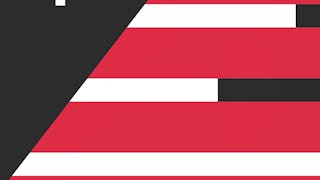In this course, we look at how to manage a system with the Linux operating system installed. The course material is a good for anyone preparing for the Linux Foundation Certified IT Associate (LFCA) exam or just interested in learning more about Linux.



Managing Linux Systems
This course is part of Learning Linux for LFCA Certification Specialization

Instructor: Aspen Olmsted
10,490 already enrolled
Included with 
(164 reviews)
Details to know

Add to your LinkedIn profile
19 assignments
See how employees at top companies are mastering in-demand skills

Build your subject-matter expertise
- Learn new concepts from industry experts
- Gain a foundational understanding of a subject or tool
- Develop job-relevant skills with hands-on projects
- Earn a shareable career certificate


Earn a career certificate
Add this credential to your LinkedIn profile, resume, or CV
Share it on social media and in your performance review

There are 4 modules in this course
In this module, we look at how we can connect Linux computers together. We start by looking at Linux network configuration files. We then move to utilizing Linux command line tools to configure network connections. We will conclude the module by looking at both basic and advanced network troubleshooting.
What's included
5 videos4 readings5 assignments1 discussion prompt1 ungraded lab
In the second module of this course, we will look at how to manage users that are authorized to use the Linux system. We will group the users into administrative groups, so it is easier to manage the permissions for a set of users. We will look at how to configure the environment for each user. Lastly, we will look at how to interrogate information about users from the operating system.
What's included
5 videos4 readings5 assignments1 discussion prompt1 ungraded lab
In the third module of this course, we will learn how to manage devices available to the Linux system for long term storage. We start by looking at disk partitions and file systems. Next we think about how we mount file systems. Lastly, we look at how to monitor the file systems.
What's included
5 videos4 readings5 assignments1 discussion prompt1 ungraded lab
In the fourth module of this course, we learn how to install application software on a Linux system. We will start with a look at downloading tar files and compiling them. We will follow up with thinking about software repositories. Lastly, we will look at installing and updating software packages from the repositories.
What's included
4 videos3 readings4 assignments1 discussion prompt1 ungraded lab
Instructor

Offered by
Recommended if you're interested in Software Development


LearnQuest


Packt


LearnQuest
Why people choose Coursera for their career




Learner reviews
164 reviews
- 5 stars
63.85%
- 4 stars
27.71%
- 3 stars
3.61%
- 2 stars
1.20%
- 1 star
3.61%
Showing 3 of 164
Reviewed on Apr 19, 2022
Loved the lab reviews. Extremely helpful. Thank you!
Reviewed on Dec 12, 2022
It is a very nice course to get you through the basics and be able to manage Linux systems with more confidence.
Reviewed on Feb 13, 2024
It was good but I wanted more details on the lab review videos.
New to Software Development? Start here.

Open new doors with Coursera Plus
Unlimited access to 10,000+ world-class courses, hands-on projects, and job-ready certificate programs - all included in your subscription
Advance your career with an online degree
Earn a degree from world-class universities - 100% online
Join over 3,400 global companies that choose Coursera for Business
Upskill your employees to excel in the digital economy
Frequently asked questions
Access to lectures and assignments depends on your type of enrollment. If you take a course in audit mode, you will be able to see most course materials for free. To access graded assignments and to earn a Certificate, you will need to purchase the Certificate experience, during or after your audit. If you don't see the audit option:
The course may not offer an audit option. You can try a Free Trial instead, or apply for Financial Aid.
The course may offer 'Full Course, No Certificate' instead. This option lets you see all course materials, submit required assessments, and get a final grade. This also means that you will not be able to purchase a Certificate experience.
When you enroll in the course, you get access to all of the courses in the Specialization, and you earn a certificate when you complete the work. Your electronic Certificate will be added to your Accomplishments page - from there, you can print your Certificate or add it to your LinkedIn profile. If you only want to read and view the course content, you can audit the course for free.
If you subscribed, you get a 7-day free trial during which you can cancel at no penalty. After that, we don’t give refunds, but you can cancel your subscription at any time. See our full refund policy.
More questions
Financial aid available,


